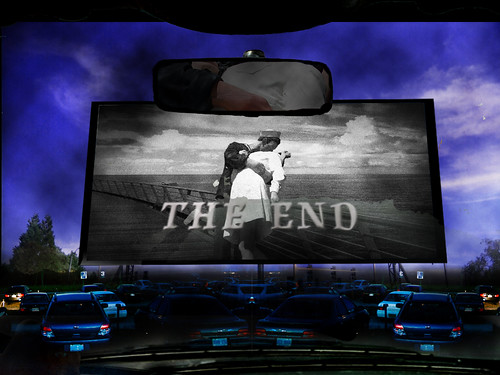At its essence, a script consists of two things: dialogue and scene description (or “action”).
The writer scripts what the characters say; and describes what they’re doing and what the audience would see — at least the important stuff.
Because too much detail can be laborious to read and should be left to the production.
Inherent in those basic guidelines are the keys to good scene description:
1. It clearly indicates what the audience would see (and nothing more).
2. It avoids making the reader work hard. Meaning it’s easy and even fun to read.
It sounds simple but like so much about writing, it’s harder to do really well than it seems.
Let’s start with the first point.
Scene description should communicate only what the audience would see.
Writers have a habit of using it to also tell the reader extra things they want them to know.
Writers have a habit of using it to also tell the reader extra things they want them to know.
But this is where scripts and novels differ.
The final consumer of a script isn’t a reader. It’s the audience of the eventual production made from it. The script is a blueprint for that. Which the audience will never read.
So scene description tells the reader what the audience would see and understand if they were watching it. That’s it.
The screenwriter has to envision the finished product and describe that. And only that.
We don’t tell the audience about character’s thoughts, or back stories, or anything else an actor can’t clearly portray in a scene. So when we introduce someone, we usually leave out their job title, relationship to others, and their history or detailed personality traits.
As I’ve written out before, we can hint at the kind of person they are, though, if it’s something the actor could suggest. And that’s more helpful to the reader than bland physical descriptions of height, hair color or wardrobe.
We do want to paint what the audience’s main impression of someone would be if they met them. Both what they seem to be like as a “type” and their emotional state at present. Because that’s part of describing what the audience would get from what they see.
So if someone is humorless, officious, creepy, cantankerous, unkempt, furious, gleeful, etc., that can be good to mention.But not that they are so-and-so’s husband, that they’re known for keeping people waiting, and that they have a certain intention in this scene.
That’s all information the viewing audience wouldn’t have. So we don’t give it to the reader.
The same holds true for describing places, things, events, and any meaning or history behind them. We’re not telling the reader what we have in mind and want them to know. We’re telling the reader what the audience would see.
And hopefully we’re doing it in a clear and vivid way that paints an intriguing picture.
Which brings me to the second point:
Scene description should be fun and easy to read.
We don’t want to make the reader work hard.
They have enough reason to want to put our script down and decide it unworthy after a page or two, or ten. It is work, after all, to read almost any script. Unlike a novel.
But if you can make it an entertaining experience, more like watching a great production than reading a writer’s thoughts about it, they might stay with it longer.
So how do you do that?
It starts, like so much about writing, with this:
You’re meeting the reader where they’re at.
And trying to connect with them emotionally.
So as the writer you understand how little they know and care until you make them know and care. You’re essentially manipulating them emotionally and they want you to.
And if you do that in a pleasant way that’s enjoyable to read, so much the better. That’s part of connecting with them on a feeling level and making it less work to read.
Your scene description would ideally paint a picture — of a place, characters, and actions — that is clear, vivid and easy to process. So it’s not difficult to get through.
We seek to avoid boring or confusing them. While hopefully making them engage and feel drawn in. Taken by the hand, even, into the wonderland that is our story and characters.
So we avoid long paragraphs of more than 3-5 lines. We avoid excess verbiage or generic words, when more colorful ones will do. And perhaps above all, we strive for clarity.
We want the reader to get what they’d be seeing and be intrigued and even entertained by it. Not trying to make sense of what you’re trying to say or put off by how you’re saying it.
Sometimes when trying to write punchy, quick, cinematic description like many produced scripts have, writers will affect such a clipped style that readers actually have a hard time moving through the sentences and understanding. I’ve seen scripts that omit the word “the” and other small lifeless connecting words in the English language.
The problem is we need such words to be able to smoothly read and understand.
So it’s not about economy for economy’s sake or trying to call attention to how snazzy your description is. It’s about choosing the best, most judicious words that help the reader clearly see and understand what they’d be taking in as an audience.
While emphasizing the conflict and emotion that’s present.
Because at the end of the day, those two elements are the lifeblood of good scenes.
The more you focus on those and help the reader feel them, the better.
Three other common scene description mistakes:
1. “Naked sluglines.”
These are scene headings that go straight to dialogue with no description in between. Always a no-no. Even if you’re coming back to a scene you recently left. You always want to re-orient the reader to what they’d be seeing, who’s there, and what they’re doing before going to dialogue.
2. Characters speaking or taking action that haven’t been introduced in the scene.
The opening description of a scene should generally clarify who is present, how they’re situated and what they’re doing. Not with great detail, just enough for the reader to imagine what they’d be seeing as we cut to this new location or time. If someone enters or exits mid-scene, that should be described. But they shouldn’t surprise readers mid-scene as having been persent the whole time.
3. Too many characters introduced all at once.
Readers can only digest and remember one named new character at at time, and even then, only when they do or say something lengthy and memorable enough (i.e. with personality, emotion, conflict and/or importance to the main character whose point-of-view we’re in) that a strong impression is made.
Try to avoid introducing multiple characters by name in the same paragraph or even the same page. Readers will get overwhelmed and frustrated having to try to hold all these names in their head. Invariably when these characters are mentioned later, the reader would have to page back to the “introduction page” to remind themselves of why they are. We don’t want to make the reader do this! 🙂



Hi Erik, More great advice…Thanks! I’m curious…I was told by a Pro Screenwriter that I shouldn’t “always” use a description of where the scene is set. For example…The scene is at a library where two characters meet in a reading room. He says I should eliminate the EXT. heading for the library and its description and only use the INT. for the reading room. He said I was wasting space. What do you think? Thanks!
Thanks for the comment Bob!
I think I agree with him if he’s saying you don’t necessarily need the EXT establishing shot of the library before cutting inside to where the scene happens.
Liked your comment about taking the reader by the hand and leading them into the wonderland that is the story. Spot on.
Thank you Jeff!
Great blog as always. Two typos: misspelled “present” under 2. “Characters speaking… and you say “at” twice under 3. “Too many characters…”
Fixed! Thanks and thanks Lynn!
I’m thinking about Get Carter with Michael Caine and the scene where he breaks into the boss’ house and they’re all sitting around playing cards, several guys, a woman. I wonder how the writer described that scene to over come the challenges of introducing so many characters at once.
I don’t suppose you can find the script online to check? 🙂
Hi Erik, What’s your take on a potentially “valid” use of naked slug lines: Only after establishing locations of two characters engaged in a phone conversation? Even for the shortest of conversations, it seems to be tedious, not to mention a wasteful use of valuable script-space, to explicitly provide a slug every time we switch between character’s lines.
In that situation I would do a slugline with some description of each character/location (give the first a first line of dialogue then before cutting to the second), and then put INTERCUT CONVERSATION on its own line after introducing the second of two. Then you can go back and forth with their dialogue as if they were in the same place.
Erik,
This is very helpful. There’s lots of advice out there. My question is more about formatting within Scene Descriptions. Aside from using CAPS when introducing a character, should we use them to highlight sounds or actions like FIDGETS? Thank you!
I think that’s a personal style choice. Usually yes with sounds and no with actions. But if you read produced scripts and find a style you like, there’s some leeway on the use of caps…
Great common-sense reminder of what a log line is, should be and what it shouldn’t be.
Thanks Gabriella!